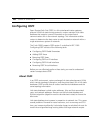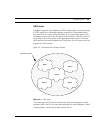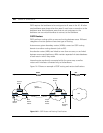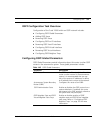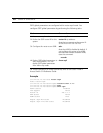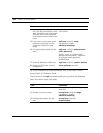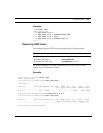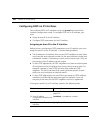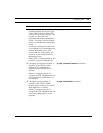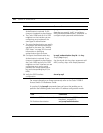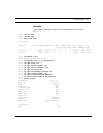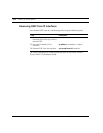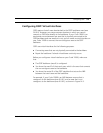
ADC Telecommunications, Inc.
306 C
HAPTER 14: CONFIGURING IP
Configuring OSPF on IP Interfaces
You configure OSPF on IP interfaces using the ip ospf command within
interface configuration mode. To configure OSPF on an IP interface, you
must:
■ Assign an area ID to the IP interface
■ Configure OSPF parameters for the IP interface
Assigning an Area ID to the IP Interface
Before you can configure any OSPF parameters on an IP interface, you must
assign the area ID to the IP interface. Consider these guidelines:
■ The IP addresses of interfaces that connect OSPF neighbors to each other
must have the same network number (or the same network number and
subnetwork number if subnetting is used), and the same mask. Only the
host portion of the IP address can be unique.
■ To form OSPF adjacencies, all OSPF neighbors must have a matching area
ID configured on the IP interfaces that connect them to each other. For
example, suppose a Cuda 12000 and two other nodes are OSPF
neighbors. On the IP interfaces that connect all three systems to each
other, you must configure an identical area ID.
■ To form OSPF adjacencies, the area ID that you assign to OSPF neighbor
interfaces must identify the same area type. For example, if you are
assigning a stub area, all the OSPF neighbors must be in agreement.
To assign an area ID to an IP interface, perform the following tasks:
.
Task Command
1. Create the IP interface. Refer to “Configuring IP Addresses” on
page 272.
2. Enter IP address
configuration mode for the
interface.
ip address <ip-address> <mask>
3. Assign an area ID to the
interface.
ip ospf area-id <area-id>



